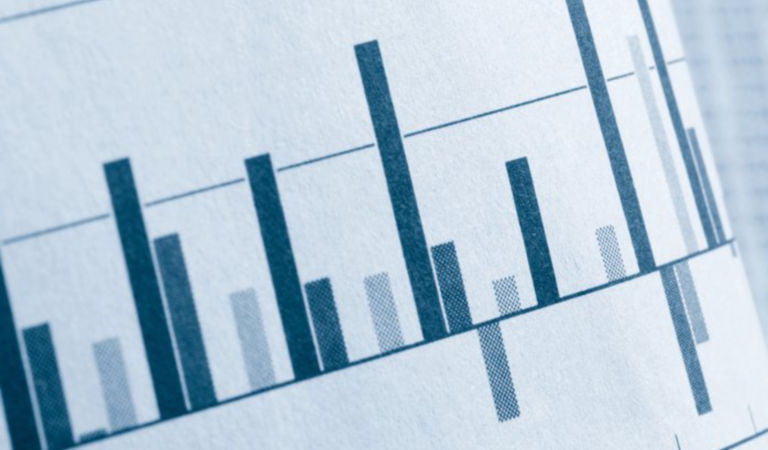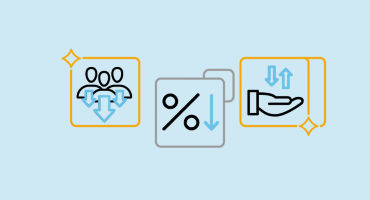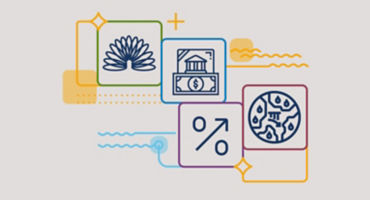Equities
Global equities (+2.6%) rebounded from losses earlier in the month, ending March with a 4.6% decline year to date. Volatility remained elevated due to geopolitical instability, rising inflation, and tighter monetary policy, although strong inflows to global equities signaled some renewed risk appetite amid depressed valuations and sentiment indicators, and a resilient economic backdrop. The United Nations reported that over four million people fled Ukraine under intensifying fighting and rapidly deteriorating living conditions in many cities. The US government downplayed President Joe Biden’s claims that Russian President Vladimir Putin is a “war criminal” and “cannot remain in power,” clarifying that the US was not advocating for regime change. At the end of March, Russian officials signaled their intention to scale back attacks in certain regions, although these claims were met with skepticism. Despite uncertainty about the economic risks posed by the conflict, most global central banks showed greater urgency in scaling back monetary stimulus and pressing ahead with interest-rate hikes due to heightened concerns about soaring inflation. Brent crude oil prices rose amid highly volatile trading, with prices reaching nearly US$140 per barrel before retreating to US$105 at the end of March. Global COVID-19 trends were mixed, but the number of cases generally remained well below January peaks. Authorities in China reported nearly 100,000 infections nationwide and imposed strict testing and lockdown requirements in several areas, including a two-phase lockdown of Shanghai and its 26 million residents.
US
US equities (+3.7%) rebounded sharply, defying fears about elevated geopolitical uncertainty from the war in Ukraine, soaring inflation, and tighter US Federal Reserve (Fed) policy. Several key themes appeared to underscore the strong rally in stocks, including unwinding short positions, a favorable outlook for US corporate earnings, robust equity inflows, the belief that the US can resist current economic headwinds better than other nations, and Fed Chair Jerome Powell’s assessment that the US economy is strong enough to withstand higher interest rates without slipping into recession. Inflation rose to another four-decade high as the headline Consumer Price Index (CPI) rose 7.9% annually in February (6.4% at the core level). The Fed raised interest rates by 25 basis points (bps), lifted its 2022 core inflation forecast to 4.1%, and cut its 2022 GDP growth forecast to 2.8%. Dot plot projections indicated that members of the Federal Open Market Committee (FOMC) anticipate six more hikes in 2022 and three in 2023, with median projections showing interest rates rising to 2.8% by the end of 2023 — higher than the Fed’s forecast neutral rate of 2.4% that neither boosts nor constrains growth. Powell subsequently indicated that the Fed is prepared to lift rates more expeditiously — and to more restrictive levels — to prevent inflation from becoming entrenched, prompting many economists to forecast one or more 50-bps rate hikes in 2022. He also signaled that the Fed could begin to reduce its US$9 trillion balance sheet shortly after its May meeting. President Joe Biden signed into law a massive US$1.5 trillion spending bill, which includes substantial increases in domestic and national security programs.
US economic data released in March showed that the US economy remained on a firm footing. The labor market was exceptionally strong as hiring ramped up after the Omicron wave subsided and declining excess savings compelled more people to work. Nonfarm payrolls surged by 678,000 in February, well above forecasts of 423,000, while the unemployment rate dipped to 3.8%. Wage growth remained historically high but failed to keep pace with soaring inflation, as average hourly earnings unexpectedly decelerated to 5.1% annually, down from 5.5% in January; easing labor shortages helped to slow the expansion in wages. Initial jobless claims in March fell to their lowest level since 1969. Consumer demand waned in February against a backdrop of rapidly rising inflation. Consumer spending grew only 0.2% after a 2.7% gain in January, while retail sales growth slowed to 0.3%, from 4.9% a month earlier. The Conference Board Consumer Confidence Index improved to 107.2 in March from a downwardly revised reading of 105.7 in February. Rising mortgage rates, sharply higher home prices, and limited property inventory drove new- and existing-home sales lower in February, although housing construction rebounded by the most since 2006 despite pressures from labor constraints, high commodity prices, and shortages of building materials.
The expansion in US manufacturing eased modestly in March as the Institute of Supply Management (ISM) Manufacturing Index slipped 1.5 points, to 57.1. Improvements in the labor supply were partially offset by rising prices and renewed materials shortages. In February, the ISM Services Index dipped to a one-year low of 56.5, but preliminary data for March signaled the largest gain in service-sector output in eight months amid a sizable increase in new business. Additionally, stronger demand caused a record-high backlog of work, while inflation and capacity pressures continued to constrain growth in the sector. In February, the National Federation of Independent Business Small Business Optimism Index slipped for the second consecutive month as inflation, supply problems, and a lack of qualified employees negatively impacted sales and earnings for many businesses.
Ten of the 11 sectors in the S&P 500 Index (+3.7%) posted positive results. Utilities was the top performer, with multi-utilities (+10.6%) and electric utilities (+10.1%) leading the sector higher. Energy (+9.0%) was another notable outperformer, as the price of oil continued to rise. Real estate (+7.8%) rose on the back of equity real estate investment trusts (REITs) strength. Financials (-0.2%) was the worst performer, led lower by the consumer finance (-9.0%) and banks (-6.8%) groups, but partially offset by diversified financial services (+9.8%) and insurance (+7.0%).
Europe
European equities (+0.9%) advanced, rebounding from a sell-off earlier in the month that was driven by Russia’s invasion of Ukraine. The intensifying conflict and attendant sanctions on Russia severely disrupted trade, exacerbated inflationary pressures, and heightened recession risks; however, stocks were supported by still-accommodative monetary policy and expansionary fiscal policies across the region. Rising energy and food prices drove eurozone inflation to a record high of 7.5% in March, as markets grew increasingly wary about the potential for further acceleration in prices over the coming months. Against this backdrop, the European Central Bank (ECB) shifted to a more hawkish stance as policymakers were more determined to confront inflation risks despite fears that the war in Ukraine could drag Europe into recession. The bank now expects to end net purchases under its asset purchase program in the third quarter and to taper the remaining asset purchases at a faster pace. The ECB also downgraded its 2022 economic growth forecast to 3.7%, from 4.2%, and significantly raised its inflation forecast for 2022 to 5.1%, from 3.2%. The Bank of England (BOE) raised interest rates for the third time since December, to 0.75%. However, it softened its stance on additional rate hikes amid concerns about the real-income shocks from rising living costs, implying that policy tightening will remain flexible and dependent on the state of the macroeconomy.
The eurozone Manufacturing PMI fell to a 14-month low of 56.5 in March. Growth momentum waned as soaring energy costs and the impacts of the war in Ukraine offset stronger demand from relaxed pandemic restrictions. Preliminary data for March indicated that demand for services was buoyed by the broader reopening of economies, although services activity was constrained by higher costs and renewed supply-chain disruptions. Eurozone economic sentiment in March fell to the lowest level since the beginning of the pandemic, driven primarily by plunging consumer confidence. Business confidence sank to a one-year low on a sharp drop in production expectations.
In the UK (+2.0%), Chancellor Rishi Sunak’s budget was widely criticized for its failure to address the cost-of-living crisis amid rising tax burdens and surging energy prices, which drove consumer price inflation to a 30-year high of 6.2% in February. In Germany (-1.9%), investor confidence in March dropped at a record pace to the lowest level since the onset of the pandemic amid fears that soaring inflation may derail the economic recovery. The government agreed to a relief package worth about €16 billion to mitigate the burden of high energy costs. In France (+0.3%), President Emmanuel Macron’s lead over far-right candidate Marine Le Pen narrowed ahead of presidential elections in April.
Pacific Basin
Pacific Basin equities (+4.9%) rebounded in March. Australia (+7.3%), one of the world’s largest commodity producers, benefited from a sharp increase in commodity prices, particularly oil and gas. However, higher oil prices and inflation negatively impacted consumers, sending consumer confidence lower in March. The unemployment rate fell the lowest level since August 2008, dropping to 4.0% in February and bringing the country closer to full employment. Against a backdrop of a firming labor market and rising inflation expectations, central bank Governor Philip Lowe struck a more hawkish tone, signaling that intensifying risks of more persistent inflation from the war in Ukraine has made it plausible that interest rates could rise later this year. Fourth-quarter GDP results released in March showed that the economy grew 3.4% from the previous quarter, as a surge in household consumption after lockdowns ended helped the economy rebound.
Japan (+5.0%) ended higher as the continued decline in the number of COVID-19 cases from their peak in early February allowed the government to fully lift all quasi state-of-emergency restrictions. The unemployment rate in February unexpectedly dropped to 2.7%, from 2.8%, despite the expansive virus curbs that were in place, signaling a further tightening in the job market. Industrial production increased for the first time in three months, rising 0.1% in February after a 0.8% decline in January, led by gains in auto output. Consumer sentiment and retail sales dropped in February for a third straight month as consumers cut back on spending due to the pandemic and concerns about rising energy costs. The yen slid to a nearly seven-year low, adding more pressure on consumers in the form of higher import costs, but providing a tailwind for Japanese exporters. Core consumer prices rose 0.6% year over year in February due to higher energy and food prices. Prime Minister Fumio Kishida instructed the Cabinet to compile a new stimulus package by the end of April to ease the burden of rising commodity prices and the effects of the pandemic, but the size of the package is unclear.
Hong Kong (+0.2%) ended slightly higher, as the number of COVID cases waned after a record spike in early March. Authorities maintained a zero-COVID approach but avoided full-scale lockdowns despite severe strains on the health care system and pressure from the Chinese government. Economists downgraded their economic growth forecasts for 2022 due to pandemic impacts, including supply-chain disruptions, a delayed reopening with China, and a 14.6% plunge in retail sales in February. In lockstep with the US Fed, the Hong Kong Monetary Authority raised its benchmark interest rate by 25 bps to maintain stability in the financial system amid heightened volatility.
Emerging Markets
Emerging markets (EM) equities (-2.0%) declined as the Russia/Ukraine conflict weighed on investor sentiment broadly, while Asian markets were strained by China’s largest outbreak of COVID-19 since the onset of the pandemic, which prompted new lockdowns. Within EM, Latin America was the top performer, followed by Asia and Europe, the Middle East, and Africa (EMEA).
Latin America (+6.6%) significantly outperformed, with the region’s stock markets and commodity producers benefiting from soaring energy, grains, and metals prices. Peru (+10.9%) and Chile (+10.3%) accelerated on the back of rising copper prices, while strength in oil aided Colombia (+10.6%) and Mexico (+6.7%). Brazil (+6.0%) advanced thanks to surging costs for energy and agricultural commodities. The country’s central bank raised interest rates by 100 bps, to 11.75%, in an effort to curtail fast-rising inflation, and signaled additional rate increases in the month ahead.
Asian equities (-2.3%) finished lower as a sharp decline in Chinese equities (-7.7%) was a drag on the region’s performance. Renewed lockdowns in several areas, including Shenzhen and Shanghai, sparked fears about factory closures and manufacturing disruptions, placing new pressures on China’s economy and threatening to significantly disrupt supply chains. The government pledged to enact measures to support the economy and financial markets, while President Xi Jinping signaled a shift in priorities, announcing that Chinese leaders must seek to mitigate the economic and social impact of virus-control measures. Renewed anxiety about supply-chain problems in China and ballooning energy prices weighed on South Korea (+0.8%) and Taiwan (+0.0%), given their dependence on exports and energy-intensive manufacturing. Thailand (+0.4%) finished modestly higher, although the economy was strained by rising COVID-19 infections and higher inflation. India (+4.3%) was a positive outlier, as investors looked through recent volatility and focused on the country’s economic recovery amid a drop in the number of virus cases and a return to normalcy in major cities.
EMEA (-5.8%) was led lower by Russia (-100%), which suffered its largest capital market drawdown following severe foreign sanctions, the temporary closure of the Moscow Exchange, and the removal of Russian securities from major equity indices, including the MSCI Emerging Markets Index. Although trading partly resumed on March 24, Russia introduced a strict permitting process for foreign investors that requires onerous documentation, and sanctions remain in place. Countries in Central and Eastern Europe are still vulnerable to spillover effects from the Russia/Ukraine conflict but ended the month higher, as investors began to focus on recovery scenarios. Turkey (+14.8%) was the region’s top performer, followed by the Czech Republic (+6.4%), Poland (+5.2%), and Hungary (+0.2%). South Africa (+1.9%) advanced for the sixth consecutive month as the economy benefited from stronger commodity prices, particularly gold, platinum, and coal.
Fixed income
The US and UK banned Russian oil imports as the war continued to devastate Ukraine. Most fixed income sectors posted positive excess returns as credit spreads tightened, while sovereign yields extended their increase amid accelerated tightening policies by major central banks.
US economic data releases were mixed amid supply shortages and stronger inflation pressures due to surging energy prices. Small-business optimism dropped on account of rising inflation and ongoing supply-chain issues. Robust job growth and a strong labor market boosted consumer confidence and helped to offset worries about personal finances, inflation, and the war in Europe. Nonfarm payrolls significantly beat estimates, the unemployment rate fell, and weekly claims dropped to historic lows. The ISM Manufacturing Index advanced, but supply constraints continued to dampen growth. Durable goods orders contracted more than anticipated, led by weakness in commercial aircraft. Weekly mortgage applications declined steadily amid rising rates, while low inventories and inflated prices dragged down new-home sales. Pending sales also declined, notably in the Midwest region. Consumer confidence in the eurozone declined, and the CPI continued to climb as the war in Ukraine pushed prices higher. Germany’s business and economic sentiment indicators plummeted amid the energy crisis and high prices. The UK’s unemployment rate dipped to pre-pandemic levels, while inflation accelerated on soaring energy and food costs. China’s Caixin manufacturing PMI declined, owing to a resurgence of COVID cases and the war in Ukraine. Japan’s current account deficit grew as oil import prices surged. Canada’s retail sales recovered, led by autos, and unemployment fell to a pre-pandemic low. Australia’s unemployment rate dipped as Omicron cases subsided.
The Fed raised rates by 25 bps. The FOMC meeting revealed the possibility of more aggressive rate increases and higher inflation forecasts and signaled the Fed’s willingness to hike rates faster, if necessary. The ECB announced an accelerated tape of quantitative easing. Sweden’s Riksbank Governor stated that a rate hike is likely before 2024. The BOE voted 8-1 to raise the bank rate by 25 bps. The Norges Bank increased rates by 25 bps and lifted its “terminal” rate.
Most global sovereign yields rose, driven by prospects of more aggressive central bank tightening amid higher inflation prints. In the US, the Fed’s rate increase contributed to a flattening in the US yield curve. The FOMC signaled the potential for a 50-bps rate hike at upcoming meetings, and the inversion of the US Treasury curve heightened fears of recession. In Europe, bund yields increased as the ECB did little to push back against market pricing for a liftoff in rates later this year. The BOE raised rates while tempering the outlook for future hikes. Norway’s Norges Bank increased rates and flagged a steeper rate-hiking cycle through 2023. Australian and New Zealand yields rose while Chinese yields declined, continuing their divergence from other major markets. EM yields also increased, particularly in Central and Eastern Europe (Poland and the Czech Republic) as well as Latin America. The Bloomberg TIPS Index delivered a total return of -1.86%, and the 10-year breakeven inflation rate increased by 21 bps, to 2.83%, during the month.
Global credit bonds outperformed duration-equivalent government bonds as spreads tightened. Within the securitized sectors, agency mortgage-backed securities and commercial mortgage-backed securities outperformed, while asset-backed securities underperformed duration-equivalent government bonds. Within EM, local markets debt (-1.53%) underperformed external debt (-0.90%), in US-dollar terms. Spread narrowing contributed positively to results within external debt, while an increase in US Treasury yields had a negative impact. Movement in EM rates drove negative performance in local markets, while currency appreciation helped performance.
Currencies
The US dollar ended mixed versus most major currencies. The Australian, New Zealand, and Canadian dollars made the largest gains in the G10 amid broad US-dollar weakness following positive signs in Ukraine peace talks and China’s pledge to expand support for the economy. The Japanese yen declined to a seven-year low as rising US yields widened the US and Japanese rate differential. The Bank of Japan’s move to defend its yield target highlighted the widening policy divergence between Japan and the US. The British pound fell as the BOE tempered its outlook for higher rates. Chancellor Rishi Sunak announced a downgrade to the UK’s 2022 growth forecast, citing the war in Ukraine and cost-of-living crisis as downside risks to the economic recovery. In EM, Latin American currencies extended their recent strong gains.
Commodities
Commodities (+9.6%) rose, with all four sectors generating strong returns against a volatile macro backdrop in the aftermath of Russia’s invasion of Ukraine. Energy (+12.5%) surged as the war in Ukraine pressured global oil and gas supplies. US natural gas (+27.3%) rallied sharply on colder weather forecasts in the US. Meanwhile, petroleum distillates emerged as the tightest part of the oil market, sending gas oil (+24.5%) and heating oil (+20.1%) higher. Crude oil (+9.3%) settled above US$100 per barrel as the European Union continued to debate ways to reduce its reliance on Russian exports and as Saudi Arabian energy assets were attacked by rebels. Gasoline (+8.6%) also strengthened, even as the US government announced plans to release roughly one million barrels of oil per day from its strategic reserves over the next several months to combat rising energy prices.
Industrial metals (+7.0%) gained on elevated concerns about war-related supply disruptions and surging energy prices. Nickel (+31.2%) prices rallied, rising as much as 250% over two trading days at the beginning of March due to a massive short squeeze that ultimately led the London Metals Exchange to suspend trading and cancel deals. Rising energy costs and recurring lockdowns in China impaired production at zinc (+14.2%) smelters, while copper (+4.6%) inventories at warehouses tracked by the Shanghai Futures Exchanges fell for a third straight week as COVID restrictions impacted inflows and as drawdowns accelerated after the Lunar New Year holidays. Aluminum (+3.1%) also advanced after Australia stated that it would ban alumina exports to Russia. Lead (+1.1%) followed the other base metals higher.
Precious metals (+2.7%) finished the month in positive territory as silver (+3.2%) and gold (+2.7%) ticked higher amid ongoing geopolitical tensions and increasing fears of stagflation.
Agriculture & livestock (+4.9%) ended higher. Cotton (+14.0%) led the group amid reports of drought conditions in Texas growing areas, while sugar (+10.2%) recovered as energy supply shortages encouraged the world’s top exporters to convert more cane to ethanol production. Grains remained in focus, with the Ukraine/Russia conflict straining global corn (+8.4%) and wheat (+7.9%) supplies. Cocoa (+4.8%) rebounded sharply in mid-March on adverse weather in West Africa. Lean hogs (+3.4%) also generated positive returns, supported by strong demand and tight hog supplies. Live cattle (-0.3%) and feeder cattle (-0.7%) settled lower. Soybeans (-1.1%) pulled back after strong gains in the previous two months. US farmers signaled higher planting intentions for soybeans versus corn, as the highest fertilizer prices on record prompted growers to turn away from the cost-intensive grain. Coffee (-2.8%) also declined amid a fading rally in the Brazilian real.









